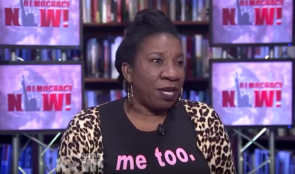The midterm elections demonstrated a shift for women in power and the move to gender parity in what many are calling the Year of The Woman. A sea change for women in politics indeed is taking place. But what everyone needs to do—in addition to remaining politically engaged— is play the long gender game.
With votes still be tallied, women won, at least, 96 of the 435 House seats, with another 22 elected to the Senate, and nine women elected governors, the highest number of women ever. Winners included Native American and Muslim women, the youngest woman ever elected to Congress and the first black woman elected to Congress in Massachusetts.
On the gubernatorial and Congressional campaign trails, women candidates broke free of traditional constraints, speaking openly about themselves as mothers of young children and breastfeeding on camera.
But the long gender game requires more sustained effort than a one-time trip to the polls. It involves cultural shifts that expand women and girls’ options for finding value and status alongside political and economic power.
Why is this necessary? From high school to college, from summer camp to soccer club, girls and young women are still limited in how they can attain status and popularity.
This has long-term consequences for women’s capacity to engage politically.
As my recent research shows, adolescent girls’ social reputations and status are based on what fellow sociologist Shamus Khan calls a “sexuality regime.” In this popularity system, conventional femininity and heterosexual appeal are essential for achieving positive recognition from peers and others.
By contrast, adolescent boys can attain recognition and approval for attributes that have little, if anything, to do with displays of sexuality or physical attractiveness. They can be “lovable dorks,” “weird artists,” “brilliant nerds,” “normal guys,” goofy “class clowns,” star athletes, and whiz gamers.
These dynamics are not limited to affluent white students with the privilege to care about popularity. My own research shows that working-class black girls struggled, mostly unsuccessfully, to have their feminine appeal recognized by their peers, and suffered great emotional pain when it wasn’t.
Although girls’ and women’s identity options among their high school and college peer groups may seem trivial, they have implications for women’s success in politics and beyond.
They push girls and women into devoting critical mental energy into a narrow set of self-objectifying, appearance-related concerns. As a classic study from the University of Michigan showed, self-objectifying thoughts “consume attentional resources” and lead to diminished mental performance. And researchers from the UK find that women’s self-objectifying thoughts are linked to reduced efforts to engage politically.
How can we shift the landscape? Here are some key strategies.
Use tactics from anti-bullying initiatives to create school environments that are kind to girls. What if students decided to lead school-wide “bystander intervention” movements of kindness to girls and women? For instance, most students passively accept comments and gossip that center on girls’ physical appearance, sexuality, and conformity to conventional femininity. Instead, students could learn to intervene with empathy, saying, “Your help is needed to make this a healthy place for women. Girls need people to care about more than how they look.” This would be a radical reshaping of the world for many girls, and the success of whole-school anti-bullying initiatives like KiVa, Finland’s national anti-bullying program, suggest it could work.
Harness the power of community youth groups to teach girls self-compassion. Girls in high school have the lowest levels of self-compassion of any subgroup of youth, heightening their vulnerability to societal messages that stress impossible beauty standards and making them vulnerable to paralyzing despair following even minor missteps. However, self-compassion curricula such as the eight-week course, Making Friends with Yourself, show promise in helping teens learn the habits of mind that can make them more resilient. More research is needed on such curricula, but community centers, religious organizations, and sports leagues could experiment with efforts to introduce self-compassion skills to the girls they serve.
Raise daughters to feel good about their bodies. Body dissatisfaction is widespread among girls, and it has negative consequences for their emotional and physical well-being. The good news is that parents influence daughters’ satisfaction with their bodies. Instead of commenting on how girls look to others (“You look so pretty in that shirt!”), focus on how their bodies serve their own needs (“I like how you noticed that you were hungry before you started feeling frantic!”).
Girls need help learning to connect their bodies to their own needs and experiences.
In the next round of elections in 2020, many will still be raising daughters and influencing girls and young women in a world that notices and praises their looks, ignoring and minimizing their other accomplishments.
Let’s change that.
Simone Ispa-Landa is an Assistant Professor of Human Development & Social Policy at Northwestern University and a Public Voices Fellow of The OpEd Project. She is a sociologist with expertise in race, gender, and education.
Worth your time
- Non Gamstop Casinos UK
- Best Non Gamstop Casinos 2025
- Non Gamstop Casinos UK
- Non Gamstop Casinos UK
- Casinos Not On Gamstop
- Casinos Not On Gamstop
- Casino Not On Gamstop
- Online Casino Canada
- Non Gamstop Casinos Uk
- Best Non Gamstop Casinos
- Meilleur Casino En Ligne France
- Casino Sites Not On Gamstop
- Non Gamstop Casino Sites UK
- Casino Online Non Aams
- Casino Sites Not On Gamstop
- Non Gamstop Casinos
- Meilleur Casino En Ligne France
- Meilleur Casino En Ligne Francais
- Casino Sites Not On Gamstop
- Non Gamstop Casinos UK
- Casinos Not On Gamstop
- Migliori Siti Casino Non Aams
- Meilleur Casino En Ligne















